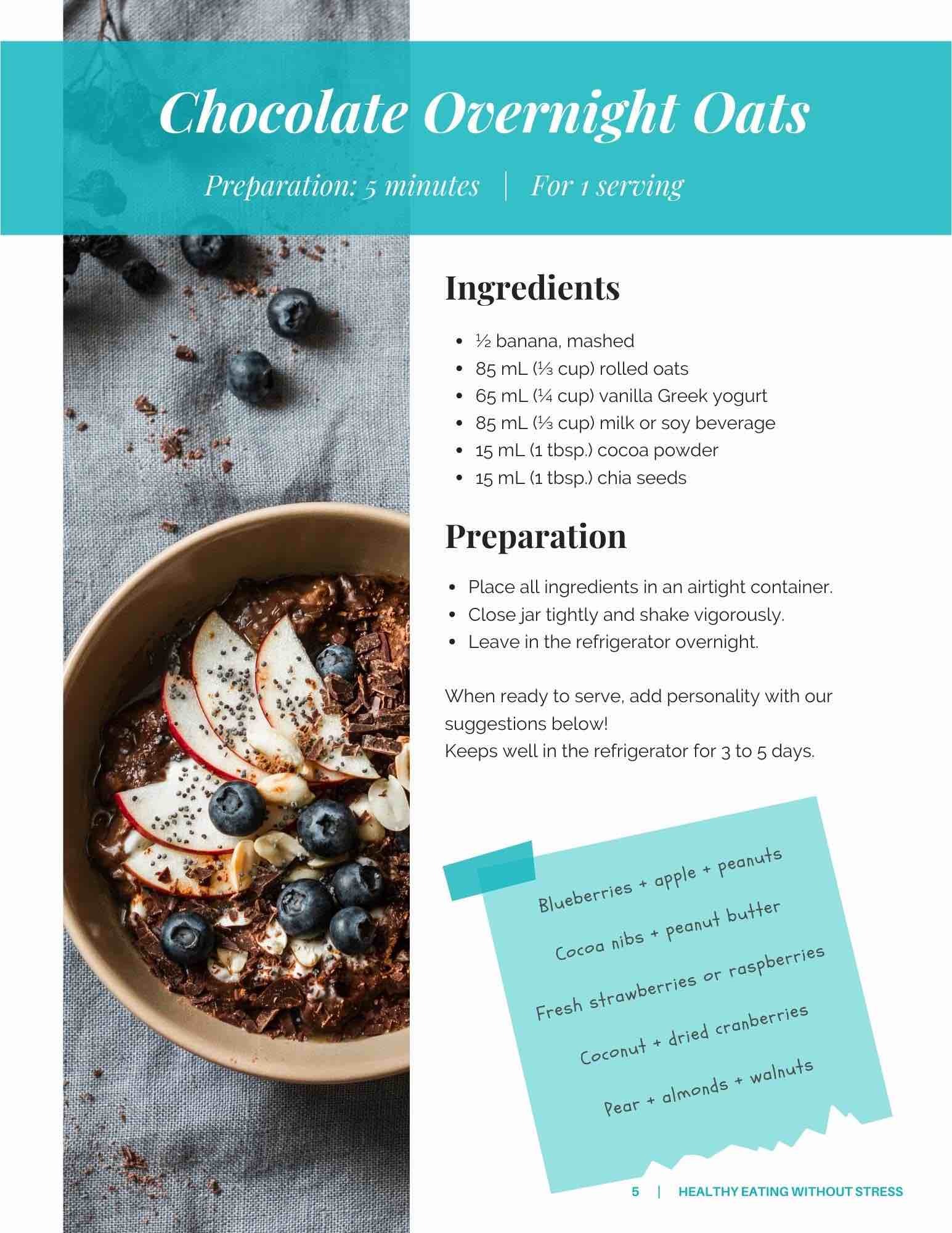
Irritable bowel syndrome (IBS) affects about 10 to 15% of the population. Symptoms like bloating, abdominal pain, diarrhea, or constipation can vary from person to person and make daily life challenging. Fortunately, dietary strategies like the low-FODMAP diet can help manage these discomforts effectively.
Before starting a low-FODMAP diet, it’s recommended to first explore basic dietary strategies, such as:
- Maintaining regular meal times
- Increasing soluble fibre intake
- Managing stress
It’s also beneficial to consult a registered dietitian to determine whether this approach suits your needs and to guide you through its different phases.
What is the Low-FODMAP Diet?

FODMAPs are types of sugars that are fermented by gut bacteria and naturally found in many foods. Due to incomplete digestion in the intestines, they can cause bloating and digestive discomfort.
FODMAP stands for:
- Fermentable
- Oligosaccharides (fructans, galactooligosaccharides)
- Disaccharides (lactose)
- Monosaccharides (fructose)
- And
- Polyols (sorbitol, mannitol)
By reducing FODMAP intake, many individuals notice significant improvements in their digestive symptoms.
Here’s a list of common High-FODMAP Foods

1. Sources of Fructans:
- Fruits: Banana, melon, persimmon, grapefruit
- Vegetables: Garlic, onion, leek, shallot, asparagus, artichoke, broccoli, Brussels sprouts
- Grains: Wheat, rye, barley
- Other: Legumes (mung beans, white beans, lima beans, black beans, pinto beans, red beans), nuts (cashew, pistachio), chicory, Jerusalem artichoke, dandelion
2. Sources of Galactans:
- Vegetables: Beets, snow peas, yellow onion, canned green peas
- Grains: Amaranth, oats, wheat, barley, rye
- Other: Nuts (pistachios, cashews), legumes (red beans, black beans, white beans, chickpeas, lentils, split peas, soybeans)
3. Sources of Lactose:
- Dairy products: Cow’s milk, goat’s milk, sheep’s milk, cream, yogurt, fresh cheese (ricotta, cream cheese, mascarpone), ice cream
4. Sources of Fructose:
- Fruits: Apple, pear, mango, cherry, melon, grape, honey
- Vegetables: Asparagus, broccoli, bell pepper
- Sugars and syrup: High-fructose corn syrup, honey, agave
- Fruit juices: Apple juice, pear juice, grape juice, mango juice
5. Sources of Sorbitol:
- Fruits: Apple, pear, cherries, peach, plums, apricots, nectarines, blackberries, avocado
- Vegetables: Fennel, green beans, turnip, sweet corn, green bell peppers
6. Sources of Mannitol:
- Fruits: Peach, watermelon
- Vegetables: Cauliflower, mushrooms, celery, cabbage, green beans
The 4 Phases of the Low-FODMAP Diet

The low FODMAP diet consists of four steps:
- Elimination Phase (4-6 weeks): High-FODMAP foods are removed to reduce symptoms.
- Testing Phase: FODMAP-containing foods are reintroduced one at a time to identify triggers.
- Reintroduction Phase: Well-tolerated foods are gradually added back into the diet.
- Maintenance Phase: A long-term, varied diet is designed to minimize symptoms while including as many foods as possible.
This process helps personalize the diet, preventing unnecessary restrictions.
Tips for Successfully Following a Low-FODMAP Diet

1. Make the Elimination Phase Easier
- Plan your meals – Having low-FODMAP recipes on hand makes the transition smoother.
- Choose safe snacks – Opt for low-FODMAP muffins like carrot-orange gluten-free muffins.
- Be mindful of ingredients – Many sauces and broths contain hidden onion or garlic. Try garlic-infused oil instead!
Need guidance? Our registered dietitians can help:
- Find FODMAP-friendly alternatives
- Plan balanced meals
- Avoid common mistakes
- Ensure nutritional adequacy
2. Sample Low-FODMAP Meal Plan
- Breakfast: Buckwheat pancakes with blueberries, pure maple syrup, and walnuts.
- Snack: Low-FODMAP sweet chili trail mix.
- Lunch: Trout Orzo Salad with a lemon vinaigrette.
- Snack: Lactose-free yogurt with chia seeds and fresh pineapple.
- Dinner: Low-FODMAP Portuguese Chicken with basmati rice and a side salad.
- Dessert: Raspberry Triple-Chocolate Mugcake with mint tea.
3. Diversify Your Meals!
- Swap high-FODMAP grains: Replace wheat toast with buckwheat bread or sourdough bread.
- Choose low-FODMAP pasta: Use rice, corn, or quinoa pasta instead of wheat-based options.
- Try vegetarian alternatives: Enjoy a low-FODMAP Tempeh Caesar Salad for a delicious and balanced meal.
Reintroducing FODMAPs: How to Test Your Tolerance
Once symptoms have stabilized, reintroducing FODMAPs helps identify specific triggers. Here’s how to do it:
- Each group is tested individually over a period of 3 to 7 days.
- Eat a food representative of the group, gradually increasing the amount over a few days.
- During each test, note your reactions, such as bloating, abdominal pain, gas, or changes in bowel habits.
- Between each group tested, a return to the low-FODMAP diet for 48 hours is important to allow the digestive system to recover.
Expert Support for a Successful Low-FODMAP Diet

Following a low-FODMAP diet can feel overwhelming, but the right support makes it easier and more effective.
- Ensure balanced nutrition – Avoid deficiencies while following the diet correctly.
- Plan your meals confidently – Receive expert guidance on every phase of the diet.
- Avoid common mistakes – Prevent unnecessary restrictions and digestive discomfort.
- Enjoy delicious meals – Discover tasty, realistic food options that fit your lifestyle.
- Gain confidence – Understand what works for your body and create sustainable eating habits.
A well-structured low-FODMAP diet can significantly improve quality of life for those with IBS. With the right approach and expert guidance, you can enjoy a varied, flavourful diet while taking care of your digestive health.
Looking for personalized support? Book a consultation with a registered dietitian for practical, tailored solutions to improve your well-being.






